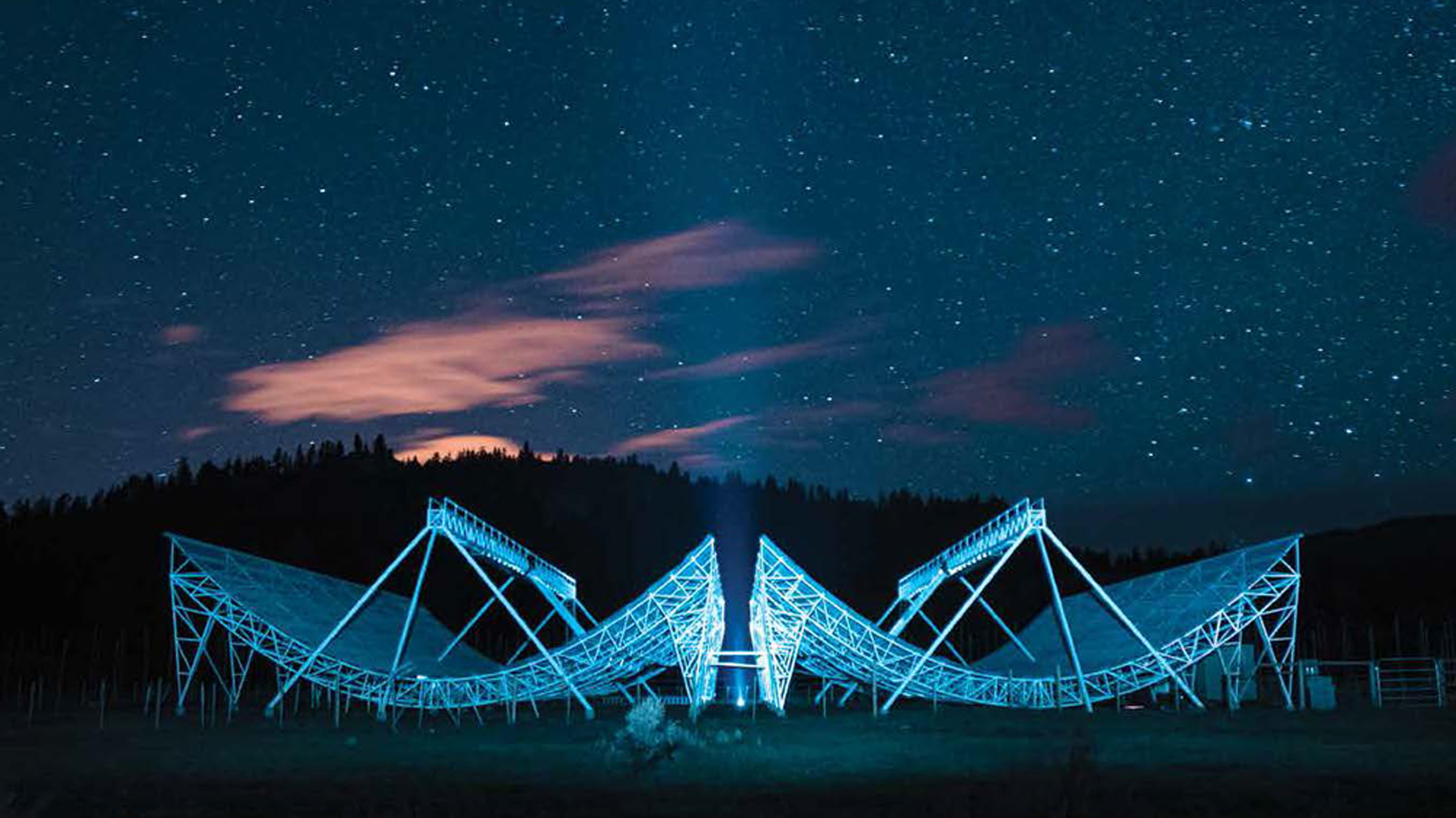By: Liz Do
27 Oct, 2022

After substantial contributions to astrophysics within its first year of operation, the team behind the Canadian Hydrogen Intensity Mapping Experiment (CHIME) was recently awarded NSERC’s Brockhouse Canada Prize.
CHIME’s team includes numerous researchers in CIFAR’s Gravity & the Extreme Universe program, including: Victoria Kaspi, program director and R. Howard Webster Foundation Fellow; CIFAR fellows Richard Bond, Matt Dobbs, Mark Halpern, Gary Hinshaw, Ue-Li Pen, Scott Ransom and Ingrid Stairs; and, Keith Vanderlinde, CIFAR Azrieli Global Scholar alumnus.
The prize, accompanied by a $250,000 research grant, recognizes highly collaborative Canadian teams of researchers from different disciplines who have combined their expertise to produce achievements of outstanding significance in the natural sciences and engineering.
“It is a tremendous honour for the CHIME/FRB, CHIME/Cosmology, and CHIME/Pulsar teams — the full CHIME family — to have been awarded the Brockhouse Prize,” Kaspi told CIFAR.
“This is a recognition of the tremendous efforts of our students and postdocs, together with faculty and professional staff, toward making a truly revolutionary telescope that is answering fundamental questions about the cosmos. I know I speak for everyone on the team when I say we are truly thrilled.”
Kaspi also credits CIFAR for enabling discussions that helped form the CHIME project at its inception.
“CIFAR has been extremely helpful to the CHIME family, giving rise to cross-disciplinary discussions and brainstorming that would likely not have occurred otherwise,” she added. “CIFAR’s Gravity & the Extreme Universe meetings were the breeding ground of so many aspects of CHIME — it is a great CIFAR success story.”
Launched in 2017, CHIME is a unique radio-telescope with powerful and unprecedented abilities. Sifting through the sounds of space — surveying more than half the sky each day as the Earth turns — the team is looking to solve one of astronomy’s biggest mysteries: Fast Radio Bursts (FRBs) from deep space.
It did not take long for CHIME to significantly expand the world’s understanding of the cosmos.
Before CHIME was even fully operational, it detected more than a dozen FRBs, one of which was only the second known to flash repeatedly. CHIME was then the first to discover FRBs that pulsate repeatedly at regular intervals. Within its first year, CHIME and its team had cataloged more than 500 FRBs, quadrupling the number of known radio bursts and revealing two types of FRB classes: one-offs and repeaters.
“On behalf of CIFAR, I would like to congratulate our Gravity & the Extreme Universe members on their richly deserved Brockhouse Canada Prize. The prize recognizes achievements in interdisciplinary collaboration — a cornerstone of CIFAR’s model,” said Dr. Alan Bernstein, President and CEO of CIFAR. “CHIME has made such an enormous impact in astronomy, and we take immense pride in our close ties to this project and the many advances it continues to make in studying the universe.”
Looking ahead the team is focused on gathering more answers from deep space through the CHIME/FRB Outrigger project, which entails building three telescopes at different locations in North America.
“We will be able to determine with high precision the exact sky location from which every FRB detected by CHIME originated,” said Kaspi. “This will let us identify from what galaxy they emerged and hence, how far away each source is. This is valuable information as it will allow us to realize the potential of FRBs as a new type of probe of the structure and content of the Universe.”